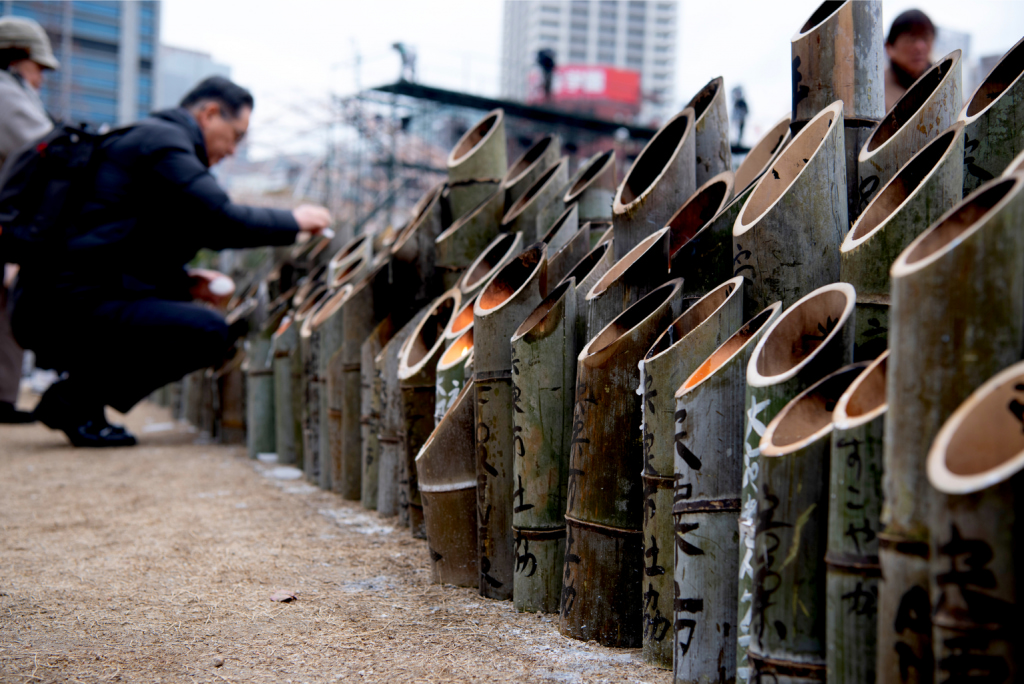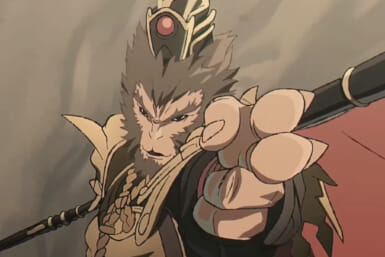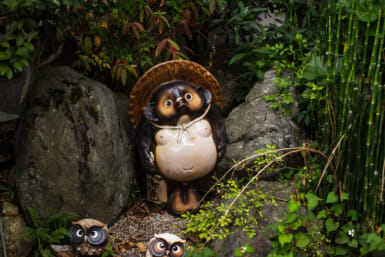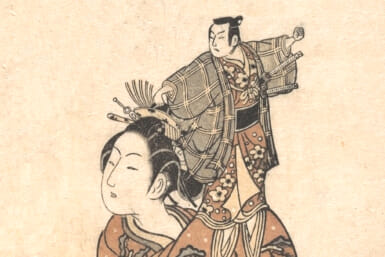With Tokyo Weekender turning 50 this year, we continue our roundup of news from the last 50 years. Earlier, we covered the most significant headlines of the 1970s and the 1980s and here we look back at the 1990s, a time known as Japan’s “Lost Decade.” The 1990s saw a period of economic stagnation in Japan due to the asset bubble collapse. Successive catastrophes in 1995 then added to the sense of unease amongst its citizens.
The J-League Begins
A crowd of nearly 60,000 flocked into the National Stadium on the evening of May 15, 1993 to witness Yokohama Marinos defeat eventual champions Verdy Kawasaki in the J-league’s first-ever game. Kazuyoshi Miura, that season’s MVP, was in the starting lineup for the losing side that night and 28 years later, the 53-year-old is still going strong. The highlight of the opening weekend was a brilliant hat-trick by 40-year-old Brazilian playmaker Zico in Kashima Antlers’ 5-0 victory over Gary Lineker’s Nagoya Grampus Eight. The England striker was one of three World Cup Golden Boot winners to ply his trade in Japan in the nineties along with Italy’s Salvatore Schillaci and Bulgaria’s Hristo Stoichkov.
A Royal Wedding
On June 9, 1993, Crown Prince Naruhito and Masako Owada tied the knot at the Kashiko-dokoro, a palace sanctuary said to enshrine Sun Goddess Amaterasu-omikami. 812 invited guests waited in the Imperial Garden while the 15-minute ceremony took place as they weren’t allowed inside. Naruhito’s parents, Emperor Akihito and Empress Michiko stayed in their Imperial sitting until the afternoon waiting for the couple to announce their marriage to them. Masako, whose 30-pound silk junihitoe (12-layered formal court dress) took three hours to put on, was initially reluctant to wed the Crown Prince as she didn’t want to sacrifice her budding career as a diplomat for the constrained life of a princess. She relented after his third proposal.
The LDP Voted Out (Briefly)
Following its foundation in 1955, the Liberal Democratic Party held on to power for 38 consecutive years. This long era of one-party dominance came to an end in 1993 with the Japan New Party, an eight-party coalition headed by Morihiro Hosokawa, becoming the new government. Hosokawa only formed the JNP a year earlier in protest to the corruption scandals that blighted the LDP in the previous two decades. However, revelations about a 100-million-yen loan from a trucking company linked to organized crime ended his tenure as prime minister within nine months. The coalition government then collapsed two months later as the Socialist Party and New Party Sakigake left to form a Grand Coalition government with the LDP.
The Great Hanshin-Awaji Earthquake
At 5:46am on January 17, 1995 the first major temblor to occur below an urban area in postwar Japan struck, killing close to 6,500 people and injuring around 40,000. The Great Hanshin-Awaji earthquake lasted for roughly 20 seconds followed by several aftershocks. Kobe was by far the worst hit with over 70 percent of the total deaths recorded in the port city. As the government struggled to cope with the sheer scale of the tragedy, volunteer groups and organizations stepped in to fill in the void leading to a shimin shakai (civil society) boom. Calls for a legal system to promote civil society activities at a wider level intensified and in 1998 the NPO Law was established.
Sarin Gas Attack
In 1992, religious sect Aum Shinrikyo sent a medical group to Zaire to ostensibly provide aid to Ebola victims. The real purpose was to obtain the virus to use as a biological weapon. When that failed they turned to sarin gas which they released at an apartment block in Matsumoto in June 1994, killing eight people. Nine months later, five Aum members simultaneously entered different lines of Tokyo Underground during rush hour carrying the toxic nerve agent in plastic bags. Twelve people died. Fatalities would have been in the thousands had the gas been pure. Leader Shoko Asahara, who hoped to start WWIII, was arrested on May 16, 1995. The following month, Fujio Kutsumi hijacked an ANA flight demanding his release.
Pokémon’s Release
It was Satoshi Tajiri’s childhood infatuation with collecting insects followed by his love of arcade and video games that lead to the creation of Pokémon. The idea he pitched in the early ‘90s revolved around bug-like creatures being traded by kids using the Game Boy link cable. “I imagined an insect moving back and forth along the cable,” he told Time magazine. Though staff members at Nintendo weren’t initially convinced, Mario creator Shigeru Miyamoto took Tajiri under his wing and Pokémon, through its red and blue version role-playing video games, was eventually launched on February 27, 1996. It is now the highest-grossing media franchise of all time with more than $100 billion in total franchise revenue.
Boy A
On May 27, 1997 the severed head of special education student Jun Hase was discovered in front of a secondary school in Kobe. Inside the mouth of the 11-year-old was a note that read: “This is the beginning of the game… Try to stop me if you can stupid police… I desperately want to see people die.” The killer, who gave himself the alias Sakakibara, later sent taunting letters to newspapers before his arrested. Referred to as “Boy A”, the 14-year-old offender also confessed to murdering 10-year-old Ayaka Yamashita on March 16 and admitted to attacking three other girls around the same date. He spent less than eight years in a medical reformatory for juveniles.
Fuji Rock Debuts
It was a howling evening that’s gone down in music history, yet for the organizers of Fuji Rock it was a nightmare. Red Hot Chili Peppers were the festival’s first headliners in the summer of 1997 at the Fuji Tenjinyama ski resort. A typhoon threatened to put a halt to proceedings yet the band, for whom lead singer Anthony Kiedis had a broken arm, continued to play through the storm. The following day, set to feature Green Day, Beck and The Prodigy, was then canceled. A move to Tokyo in 1998 went without major incident but proved uncomfortably humid, so in 1999 the event found its home in the cooler mountains of Naeba in Niigata where it’s remained ever since.
Nagano Olympics
Twenty six years after the Sapporo Games, the Winter Olympics returned to Japan in 1998 with Nagano hosting the event having previously failed with two bids. The highlight for the home crowd came in the men’s team ski jumping competition. Four years earlier in Lillehammer Masahiko Harada cost his country victory with a disastrous final jump of 97.5 meters. His first attempt in Nagano was even worse at 79.5 meters, knocking Japan down from first to fourth. He then redeemed himself, equalling the Olympic record of 137 meters. Harada wept as Kazuyoshi Funaki, who’d already won the individual large hill event, secured the triumph. Hiroyasu Shimizu (speed skating), Takafumi Nishitani (short track speed skating) and Tae Satoya (moguls) were Japan’s other gold medallists.
The Wakayama Curry Incident
A summer village festival in Sonobe, Wakayama in 1998 was the setting for one of Japan’s most notorious and bizarre crimes of the 20th century. Four people died and 63 suffered from acute poisoning after the communal curry pot was laced with 1,000 grams of arsenic. Masumi Hayashi, an outsider in the community, was allegedly seen acting suspiciously near the pot while preparing for the event. Traces of the crystalline metalloid product, which her husband used for his pest extermination business, were detected in her hair. Prosecutors, who also accused her of previously attempting to murder her husband and an acquaintance, only presented circumstantial evidence yet Hayashi was still sentenced to death. She’s never confessed to the crime and continues to appeal the decision.
In the charts
Best-selling Single: Dango 3 Kyodai (Kentaro Hayami, Ayumi Shigemori, Himawari Kids and Dango Gasshodan)
Best-selling Album: First Love (Hikaru Utada)
Popular Films: Sonatine (Takeshi Kitano), Swallowtail Butterfly (Shunji Iwai), Princess Mononoke (Hayao Miyazaki), Shall We Dance? (Masayuki Suo), Ring (Hideo Nakata), Audition (Takashi Miike)
New Releases: Slam Dunk (1990), Sonic the Hedgehog (1991), PlayStation (1994), Pokémon (1996), One Piece (1997), Naruto (1997), Toyota Prius (1997)
Read the Headlines from Tokyo Weekender’s Very First Issue!
On February 13, 1970, editors and publishers Susan Scully and Millard (Corky) Alexander delivered the first issue of Tokyo Weekender with the announcement, “That’s us, folks–a spanking, new weekly publication.” See our roundup of the topics and issues that made headlines 50 years ago in Tokyo in that very first issue here.
Featured image: Kobe, Japan-Jan 17, 2020. Marking the 25th anniversary of the Hanshin-Awaji earthquake. Shutterstock









